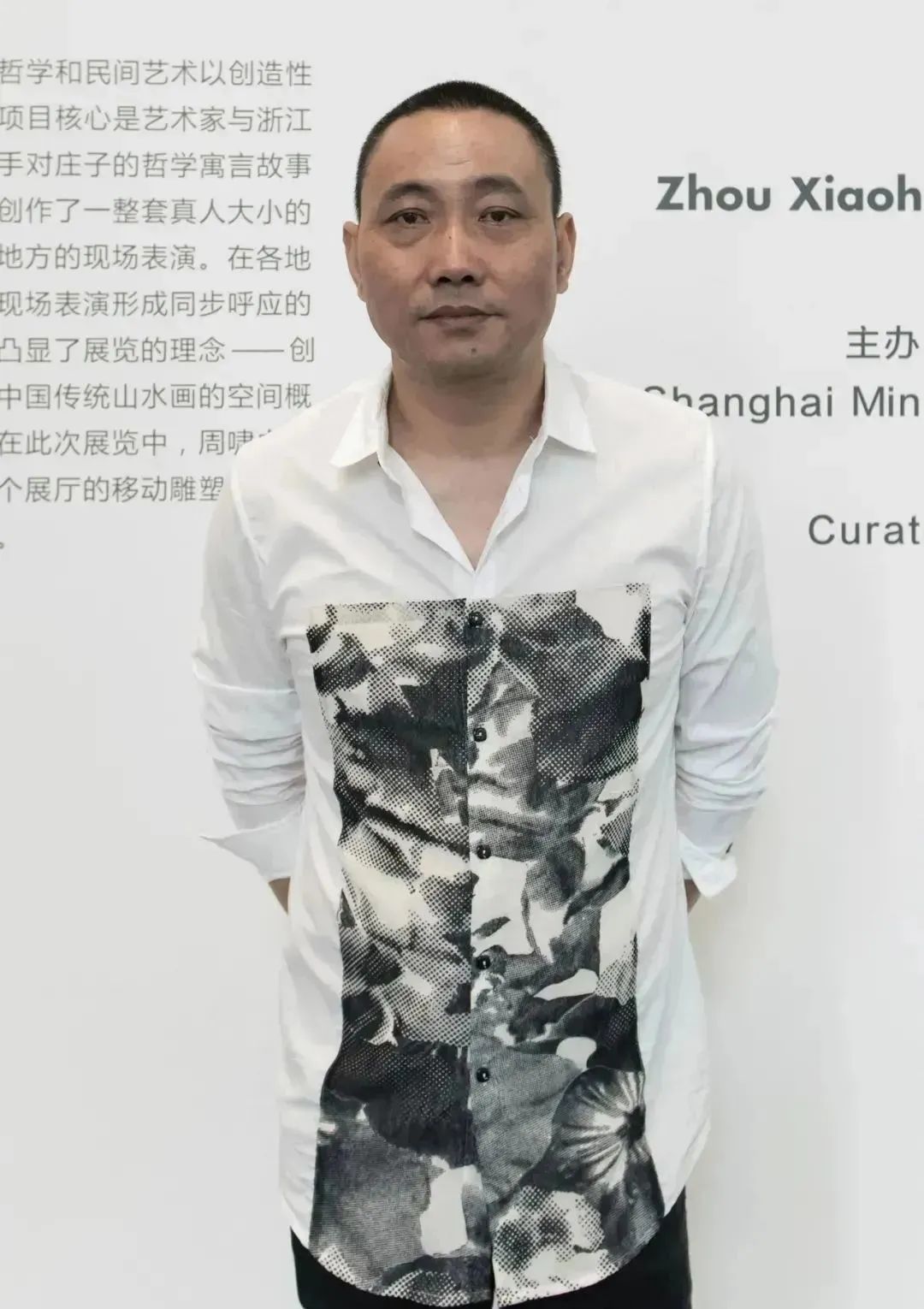—
“For A Bigger Picture”
/ Zhou Xiaohu

Zhou Xiaohu
Zhou Xiaohu (b. 1960, Changzhou) is a pioneer of video animation in China . Zhou began using computers as an artistic tool in 1998. As one of China’s most well-known most prolific contemporary artists, he specializes in inducing confusion and bafflement, making viewers question the evidence of their senses and their assumptions about the so-called ‘facts’. He has since experimented with stop-frame video animation, video installation and computer-gaming software, whereby the interlayering of images between moving pictures and real objects has become his signature style. Working across performance, photography, installation, sculpture, video, and animation, Zhou’s practice reflects the documentation of history in a digital age.
—


In “Utopia Machine”, he uses material, video or television quality content, that is, when you read images, or accept images as real possibilities, you are actually waiting for your expected consumption that is caused by potential images.
Zhou Xiaohu uses the virtual reality to express the "Utopian Machine", he applies the pottery man to replace the real man, pottery machine to replace the real machine, this is funny and absurd irony as well as alluded to the way of cultural consumption. Another feature of this work is that the image object is not the real scene, but the shooting of the "art" itself, so we assume that the object can also exist or be displayed without video. Actually, we also can find out in current oil painting and sculpture with "TV" that is subject matter, his wisdom depends on him to express with pottery model story with "utopian machine" as the cultural reality, but also records this reality with itself, what he subverts is reality and narrate means. This subversion makes us forget that video exists, just as we neglect that we are alienated into a Utopian world when we turn on the TV every day.



Zhou Xiaohu's video installation "Concentration Training Camp" reproduces the staff training of American brands stationed in China in the absurd way of 8 chapters. The artists cooperated with the performers of the acrobatic troupe, while the performers completed the performance in an upside down state. In the later video editing, the picture was reversed and still looked "normal", but presented an unnatural and controlled state. These pictures let people witness the realization of the "American Dream" in China under globalization, also the artist and his creation have gradually entered the international vision.

"Extreme Surprise"is another change in his creative techniques. He uses tools in daily life with plastic flower and bird products to transform them into light and shadow calligraphy by projecting spotlights on the wall. The sharp silhouette of simple objects forms the sharp edge of traditional calligraphy fonts. The phrases eventually projected on the wall, for example, "Extreme Surprise", "Shaking Breeze Hair" and "You are a Piece of Meat", with strong sense of the literal color, endowing another implication.


The History of Time” is adapted from “History of Information Transmission”, the second chapter of Zhou Xiaohu’s 2019 3D animation “Lost Garden”. This work focus on the history of information transmission and ways of it, including the game between people and time maze,and their hopelessless will to control. The image consists of disassembled and weightless pieces of information-transfer equipment and a floating slice of the ocean. A dispossessed creature enthralled by the dark web, only the clock chimes on time.
From his works, we can understand that animation and scene sculpture can be juxtized to maintain parallel space and time, which can also exist independently: the single frame of animation is relatively independent and strengthened in time, which just constructs the relationship between phenomenon or representation, material evidence or perjury with scene sculpture extracted like a broken sentence.
Zhou Xiaohu is a creative contemporary artist. As the first artist to create experimental animation works in China, he has se up many important works in the fields of video, installation and performance. Most of which have made an in-depth analysis of the social psychology of contemporary China as "Social Installation" by artists.
—
The work of Zhou Xiaohu has been exhibited at MoMA, New York, USA; Tate Liverpool; Kunst Museum Bern, Switzerland; and the International Center of Photography, New York, USA and the Museum Moderner Kunst Stiftung Ludwig, Wien, Austria. He has participated Shanghai Biennale; Seville International Art Biennale in 2004; Asia Pacific Triennial of Contemporary Art, Brisbane, Australia in 2006; The Real Thing, Tate Liverpool in 2007; Not Soul For Sale, Tate Modern Turbine Hall in 2010; and the 8th Gwangju Biennial, Gwangju Art Museum, Korea in 2010. Zhou Xiaohu was awarded the CCAA Award in 2002 and 2006; and won the gold award in the experimental video category in the 36th Houston international film festival; and 2014 has been awarded a DAAD Artists-in-Berlin Program.
